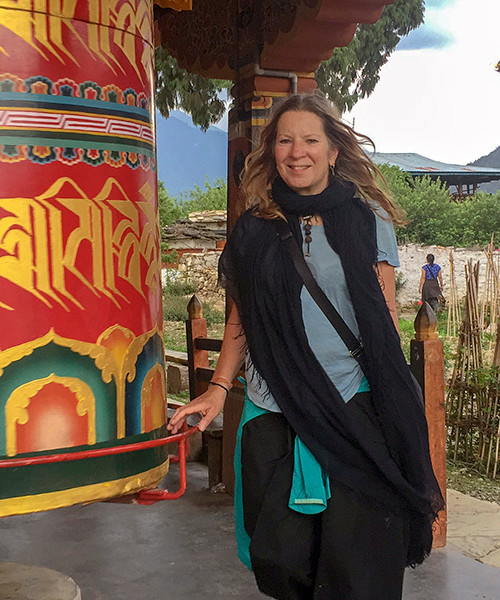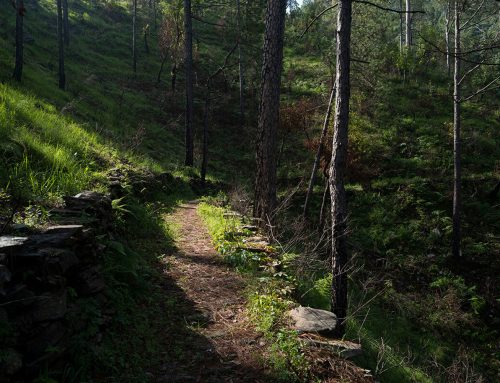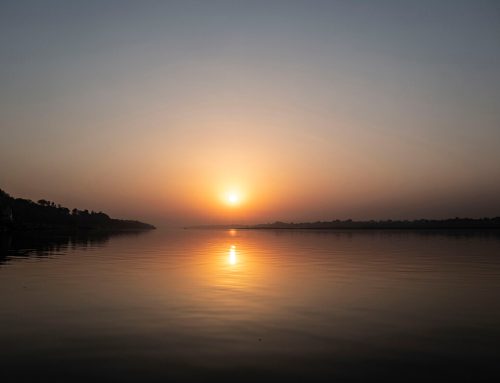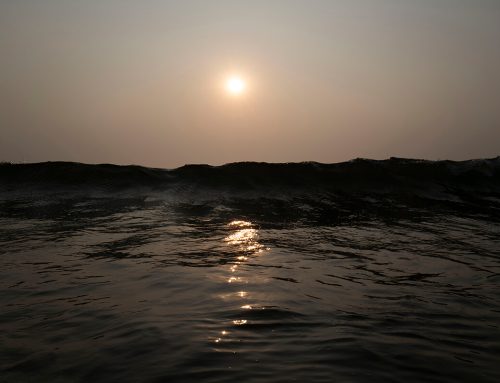A yoga history in a mustard seed
by Heather Elton
The Vedic Age spans 1500-500 BCE. As the indigenous Dravidians migrated eastward there was an influx of other people – Aryans, – or ‘Noble Ones’ in Sanskrit, belonging to an Indo-European language group, who came over the mountains from Asia around 1500 BCE, first settling in the Indus River, and then moving into the passes of the Hindu Kush, before spreading across Northern India. These Aryan tribes were also climate change refugees forced to leave the fertile Karakhoum (Black Dessert) in Turkmenistan, home to thousands of settlements, destroyed at the time of Mohenjo Dharo.
One of the poems of the Rig Veda is the story of Aryan tribes moving across North India, led by Agni, the God of Fire, burning forests and looking for new lands. The Aryans were warriors who brought the horse and wheeled vehicles, chariots and carts (rathas) to India. They lived in mud-bricked houses and were essentially cowboys or cattle herders. Their priests performed fire rituals at special altars, and drank the sacred intoxicant Soma.
By 1000 BCE, Aryan tribes were fighting for supremacy. Heroic warfare was crystalised in the Mahabharata (the longest poem in the world and, for Hindus, the greatest story ever told). It was a time of heroic warfare.
 Above and below, migration routes of the Aryans.
Above and below, migration routes of the Aryans.

Are the origins of Yoga in the Vedas?
The Aryans brought their own culture and religion. And their own Gods. Vedic religion had nothing to do with ‘Hinduism.’ And, perhaps, little to do with yoga as we know it today. Aryans spoke early Sanskrit, and sang hymns (Vedas) to the gods while Brahmin priests engaged in elaborate rituals and sacrifice, at the center of which was a yajna (fire altar). The Vedic Age spans 1,000 years, so we’re taking a macrocosmic view of it as it might relate to early sources of Hatha Yoga.
But let’s go back to beginningless time. Here is a story of the origin of Vedic Yoga. It’s set in the Vedic Age but told much later in the Mahabharata. The story tells how Vishnu (God of maintaining the universe) rests on his cobra, Adishesa, in the milky sea, the cosmic ocean, between two universes – that which has gone and the one that has yet to rise. Desire arises and from this ripeness a flower grows out of Vishnu’s navel (Manipura Chakra) and there is an entity called Hiranyagarba. He has a golden womb; a golden egg. No idea why he is there. Everything is dark. He lowers himself on to the lotus stem and back into the flower. Doesn’t know who he is or where he is. The he hears a word – Tapas.
Tapas = contemplative creative fervor. Heat. It relates to practices that create heat inside the body and are performed by tapasya yogis. Hiranyagarba thinks he has to meditate on this. Later, he becomes Brahma and creates the world.
Inhale/exhale. Thought arises and dissipates. Like Vishnu’s two universes.
 Above, Hiranyagarba as Brahman sits atop a flower emerging from Vishnu’s Manipura chakra.
Above, Hiranyagarba as Brahman sits atop a flower emerging from Vishnu’s Manipura chakra.
Who are the Vedic gods?
Vedic Gods and humans intermingled during the Vedic Age, a time also known as Satya Yuga. Humans believed the Gods were real. According to scholar Matthew Clark, it was only after the advent of currency, with a coin and image of the King, that humans developed the capacity of abstract thought. In Vedic times, the gods adorned the sky. Surya (God of Sun) graced the heavens. Indra (God of Rain), Agni (God of Fire), Vayu (God of Wind), Varuna (God of Water) and Yama, Lord of Death.
 Above, Surya, the Sun God, in his chariot ushering light upon the world.
Above, Surya, the Sun God, in his chariot ushering light upon the world.
 Agni, the Fire God. The source of all knowledge.
Agni, the Fire God. The source of all knowledge.
 Above, Indra, God of Rain, thunderbolts and lighting. God of War. His sacred mount is the Elephant.
Above, Indra, God of Rain, thunderbolts and lighting. God of War. His sacred mount is the Elephant.
You can tell who the deity is by looking at the sacred symbolism – number of arms, mudras, celestial weapons and sacred mount.
 Vayu (God of Wind), riding an agile antelope with the qualities of wind.
Vayu (God of Wind), riding an agile antelope with the qualities of wind.
 Varuna (God of Water) riding a crocodile.
Varuna (God of Water) riding a crocodile.
 And Yama (Lord of Death) on a black buffalo.
And Yama (Lord of Death) on a black buffalo.

The Vedic Age produced the first text known to humanity – Rig Veda. Rig Veda was transmitted orally, for more than 2,500 years. A literary tradition is traceable in post-Vedic times, after the rise of Buddhism, possibly towards the end of 1 BCE. Due to the ephemeral nature of manuscript material (birch bark or palm leaves), surviving manuscripts rarely surpass an age of a few hundred years. The Sampurnanand Sanskrit Universtity has a Rigveda manuscript from the 14th CE; however, there are a number of older Veda manuscripts in Nepal that are dated from the 11th century onwards.
The four early Vedas are Rig Veda, Sama Veda, Yajur Veda and Artharva Veda. (1500-1000 BCE). For the most part, the Vedas read like a ritual manual for the Brahmin priests. The main four pillars of Vedic religion are: Rta (rhythm of the cosmos), Fire (Yagna/Agni), Duty (Dharma) and Knowledge(Jnana). Sacrifice, fire, soma and mantra were the devices to maintain order in a chaotic universe.
 Above, Sapta Rishis, early Vedic yogis practising tapas. Early Tapasya yogis did similar practices.
Above, Sapta Rishis, early Vedic yogis practising tapas. Early Tapasya yogis did similar practices.
But how did the Vedas come into existence? The Rig Veda was ‘whispered’ into the minds of the Sapta Rishis. The Vedas were heard into existence. Vedic texts are Shruti – that which is HEARD. Divine revelation. Not a human creation. Smriti refers to the later texts, like the Epics, which are ‘remembered’ by ordinary humans. Sanskrit is considered a ‘polished’ language – the language of the gods.
Rishis are yogis, seers, sages, or inspired poets, who communicated with Vedic gods, and through intense tapas, or meditation, realised truths and eternal knowledge, and composed hymns. The Vedas are hymns to the gods used in elaborate rituals to manipulate connections between the individual, the world and the heavens – the micro and macrocosms. It was all about connection. Vedic religion was a form of communication between Vedic gods and humans through Brahmin priests. As Matthew Clark (SOAS professor who has taught on a few of my trainings) describes:
“Think of a Bronze Age Ayahuasca ceremony where hundreds gathered outdoors around a sacred fire altar, (yagna), chanting mantras, drinking Soma (the nectar of immortality), and making offering to the gods.”
 Above, Gods and humans and Vedic Yagna (fire altar).
Above, Gods and humans and Vedic Yagna (fire altar).
Ritual and sacrifice were the most important spiritual practices and were done to maintain rhythmic order within a chaotic universe (rta). The Horse sacrifice –Ashvamedha Yagna – took over a year to complete. Robert Kalasa’s poetic masterpiece, Ka, dedicates an entire chapter to the horse sacrifice. Ka is the best book I’ve read to give insight into this extraordinary time.

Above, The Horse sacrifice –Ashvamedha Yagna
 Above, Detail of Vedic altar in the Hindu Math at Bodhgaya with lotus petals and mantras.
Above, Detail of Vedic altar in the Hindu Math at Bodhgaya with lotus petals and mantras.
What is Soma?
Soma, or Amrita (the drink of immortality), is also an important part of Vedic culture and religion. The gods drank it and fought over it. There is much speculation about the ingredients and effects of this psychoactive drug, and if you’re interested, Matthew Clark who researched the topic for 15 years, recently published his findings in The Tawny One: Soma, Haoma, Ayahuasca.
 Above, Fresco of women preparing Soma in Sigiriya Caves in Sri Lanka (above) and except from the Hatha Yoga Pradipika (below).
Above, Fresco of women preparing Soma in Sigiriya Caves in Sri Lanka (above) and except from the Hatha Yoga Pradipika (below).

David Frawley describes the effects of Soma in Wisdom of the Ancient Seers (1992):
“Drinking the Soma is a state of consciousness in which, dwelling in pure perception, we imbibe the essence of what is, we absorb the being of what we see and enter into the universal life.”
 Above, Samudra Manthana (Churning of the Ocean).
Above, Samudra Manthana (Churning of the Ocean).
One of the best-known myths in Hindu philosophy is the Samudra Manthana (Churning of the Ocean) which describes the origin of Soma. It might have relevance to contemporary yoga in terms of maintaining equanimity. The story also appears in the later Bhagavata Purana, the Mahabharata and the Vishnu Purana.
The story goes that a war began when the Devas (the gods) were weakened by a curse placed on them by Durvasa. Indra, ruler of the Devas, insulted Durvasa when his elephant cast his gift of a garland to the ground. The curse deprived Indra and the Devas of strength, energy and fortune and, because they were weak, the Asuras (the demons) seized the opportunity to attack.
Vishnu told the Devas to treat the Asuras with diplomacy and offer them an equal share of Amrita. However, he also arranged for the Devas alone to receive the Soma. Vishnu gave instructions to churn the ocean by placing the mountain, Mandara, in the ocean of milk as the churning-stick, and using the serpent, Vásuki, as the rope to pull to and fro. He tells the Devas to take the tail of the snake, knowing that it would “vomit poisonous flames when twisted and pulled.” When the mountain was placed in the ocean it began to sink. Vishnu turned himself into the avatar, Kurma (the tortoise), and supported the mountain on his shell. Once the amrita is brought forth, Vishnu takes the form of his avatar, Mohini, a beautiful enchantress who distracts the Asuras, takes the amrita and distributes it among the Devas, who drink it. Vishnu sometimes sits on top of the mountain to keep it steady.

As the ocean was stirred up, halāhala (poison) rose from the depths, and as neither the Devas and Asuras could bear the lethal fumes, both sides collapsed due to asphyxiation. Shiva came to the rescue. He sucked up the poison and held it in his throat. The halāhala turned Shiva’s throat blue. Hence, he is also known as Nīlakaṇṭha, the Blue-Throated One.
The relevance to yoga is that Shiva neither swallowed the poison, nor spit it out. He had neither aversion to it, nor desire to drink it. He held it in his throat with total equanimity. In some versions, it was the goddess, Parvati, who gripped her husband’s neck with both hands to stop the poison. In others, Shiva’s cobra wrapped itself around his neck to cool the substance and protect Shiva. From the process halāhala was transformed into Soma.
Fire, sacrifice, soma and chanting hymns are the essence of Vedic religion. Fire is seen as the source of knowledge and became a symbol of the ascetic lineages with sympathy for Vedic lineage. Without Agni the lineage dies.
 Above, an assortment of Vedic gods sitting around the Yagna.
Above, an assortment of Vedic gods sitting around the Yagna.
Mantras are the vehicle to communicate with the gods. Gayatri Mantra is from the Rig Veda and so is the oldest mantra we have. It pays homage to the radiance of Surya (Sun) and, in the process of chanting it, we realise that there is an inner radiance within all of us. Mantra is the oldest form of yoga. And it comes from the Vedic Age.
 The Hindu Supreme God Vishnu, depicted as the Cosmic Man, whose body contains the entire universe. Courtesy Smithsonian Institute, Yoga of Transformation.
The Hindu Supreme God Vishnu, depicted as the Cosmic Man, whose body contains the entire universe. Courtesy Smithsonian Institute, Yoga of Transformation.
Another important idea is Purusha, or Cosmic Man, whose sacrifice by the gods created all life.
The Purusha Sukta from the Rig Veda says:
“Purusha has a thousand heads, a thousand eyes, a thousand feet. He pervades the earth on all sides and extends beyond it as far as ten fingers. He is whatever has been and whatever is to be. He is the ruler of immortality. From him Viraj was born and from him came Man.
The gods spread the sacrifice with the Man as the offering. The melted fat was collected, and he made it into beasts who live in the air, in the forest, and in villages. From that sacrifice, the verses and chants were born, the metres were born from it, and from it the formulas were born. Horses were born from it, and those other animals that have two rows of teeth, like cows, goats and sheep.
When they divided the Man, his mouth became the Brahmin; his arms were made into the Warrior, his thighs the People, and from his feet the Servants were born. The moon was born from his mind; and from his eye the sun was born. Indra and Agni came from his mouth, and from his vital breath the Wind was born. From his navel the middle realm of space arose; from his head the sky evolved. From his two feet came the earth, and the quarters of the sky from his ear. These were the first ritual laws and set the worlds in order. These offerings reached the dome of the sky where dwell the Sadhyas, the ancient Gods.” – (Translated by Wendy Doniger, 1981, The Rig Veda, Penguin, p.29-32.)

Vedic culture was a highly-structured agricultural society where people worked hard and paid taxes. The caste system emerged from the Purusha myth with Brahmin priests at the top. The four classes (varṇa) and the basis of castes:
- Brahman – Brahmin priests, scholars and teachers
- Kṣatriya – rulers, warriors and administrators
- Vaiśya – farmers, artisans and merchants
- Sūdra – labourers and servants of the other classes
Eventually, there was a revolt and some people renounced Vedic life to practice yoga in the jungles and forests.
The main question relevant to yoga that we need to ask is if Vedic religion emerged from this meeting of cultures – the Indus Saraswati people and the Aryans? Did the Brahmanical Vedic stream (Aryans) merge with the Indigenous stream of beliefs? Or did two distinct Vedic and non-Vedic streams of thought and practice exist? It makes a difference in terms of how we interpret what came next. ♦
T A K E A W A Y
- Rig Veda was ‘whispered’ into the minds of the Sapta Rishis. Vedic texts are Shruti – that which is HEARD. Divine revelation. Not a human creation. Rishis communicated with Vedic gods, and through intense tapas, or meditation practice, and composed hymns. Vedas were used in elaborate rituals to manipulate connections between the individual, the world and the heavens – the micro and macrocosms. It was all about connection.
- Fire, sacrifice, soma and chanting hymns are the essence of Vedic religion.
- Oldest form of yoga is mantra.
- Gayatri Mantra comes from the Rig Veda.
- Soma is the drink of immortality.
Missed the beginning? Start at the top with Part One – A Yoga History in a Nutshell: Introduction
Read Part 4 of – A Yoga History in a Mustard Seed: The Upanishads
This series of articles in A History of Yoga is intended for students on my 200-hour Yoga Teacher Training programs and explores the philosophy and practice of yoga throughout it’s history. Many of the ideas are inspired by the teachers who have taught Yoga Philosophy on my Yoga Teacher Training programs. Richard Freeman, Emil Wendel, Jim Mallinson, Mark Singleton, Ian Baker, John Weddepohl, Daniela Bevilacqua, Matthew Clark, Daniel Simpson and Ruth Westoby. The Hatha Yoga Project and Centre of Yoga Studies at SOAS, and online courses with Seth Powell (Yogic Studies), have also been influential. As always, deep gratitude to my guru, Dzongsar Jamyang Khentsye Rinpoche, for his presence and teachings. 🙏🏽 Any misrepresentations of facts or dharma are totally of my own doing for which I’m truly sorry.
2 Comments
Leave A Comment
You must be logged in to post a comment.






I’m someone who has been to India and unfortunately I have seen westerners either pushing Christianity or taking the Vedic roots away and trying to make out that Vedas were a western philosophy- It’s sad because the Mughal empire also did similar… Crazy.
India has a complicated past but no surprise since it spans thousands of years. Both the Mughals and the Hindus tried their best to destroy all evidence of Buddhist culture that ruled India for 500 years. Truly grateful for the Ashok pillars that are material evidence from this time and to the British archeologists who unearthed hidden Buddhist sites for the world to see.